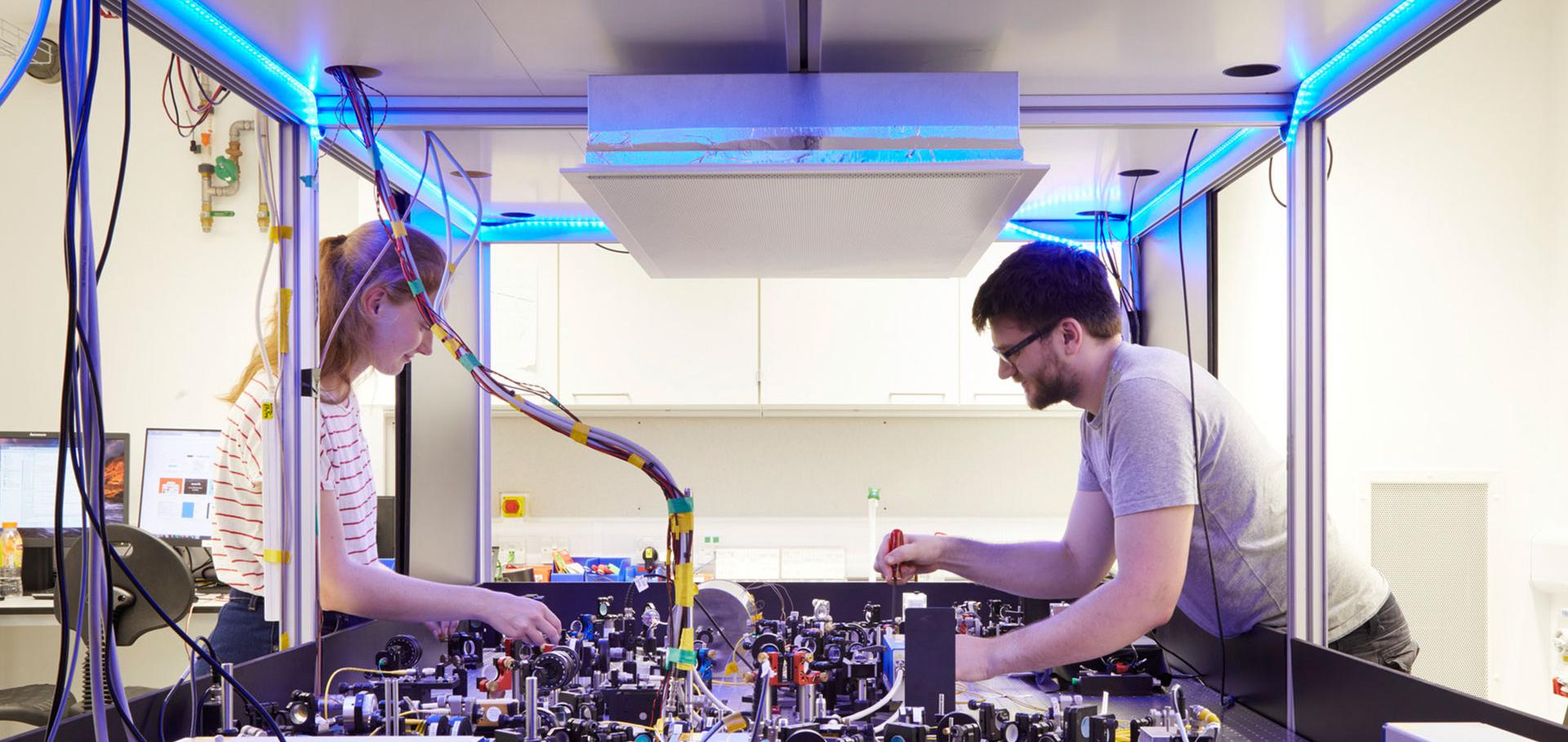Few-qubit quantum-classical simulation of strongly correlated lattice fermions
EPJ Quantum Technology Springer 3 (2016)
Abstract:
We study a proof-of-principle example of the recently proposed hybrid quantum-classical simulation of strongly correlated fermion models in the thermodynamic limit. In a “two-site” dynamical mean-field theory (DMFT) approach we reduce the Hubbard model to an effective impurity model subject to self-consistency conditions. The resulting minimal two-site representation of the non-linear hybrid setup involves four qubits implementing the impurity problem, plus an ancilla qubit on which all measurements are performed. We outline a possible implementation with superconducting circuits feasible with near-future technology.Light-induced superconductivity in metallic K3 C60
Optics InfoBase Conference Papers (2016)
Abstract:
Resonant excitation of local molecular vibrations at mid-infrared wavelengths is shown to induce a transient superconducting state in the organic superconductor K3C60 for temperatures far above the equilibrium critical temperature.Possible Light-induced Superconductivity in Metallic K3C60
2016 41ST INTERNATIONAL CONFERENCE ON INFRARED, MILLIMETER, AND TERAHERTZ WAVES (IRMMW-THZ) (2016)
Parametric amplification of a superconducting plasma wave
Nature Physics Nature Publishing Group 12 (2016) 1012-1016
Abstract:
Many applications in photonics require all-optical manipulation of plasma waves1, which can concentrate electromagnetic energy on sub-wavelength length scales. This is difficult in metallic plasmas because of their small optical nonlinearities. Some layered superconductors support Josephson plasma waves2, 3, involving oscillatory tunnelling of the superfluid between capacitively coupled planes. Josephson plasma waves are also highly nonlinear4, and exhibit striking phenomena such as cooperative emission of coherent terahertz radiation5, 6, superconductor–metal oscillations7 and soliton formation8. Here, we show that terahertz Josephson plasma waves can be parametrically amplified through the cubic tunnelling nonlinearity in a cuprate superconductor. Parametric amplification is sensitive to the relative phase between pump and seed waves, and may be optimized to achieve squeezing of the order-parameter phase fluctuations9 or terahertz single-photon devices.Thermometry of ultracold atoms via nonequilibrium work distributions
PHYSICAL REVIEW A 93:5 (2016) ARTN 053619


